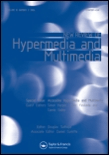
New Review of Hypermedia and Multimedia
Scope & Guideline
Connecting Scholars to the Future of Media Technology
Introduction
Aims and Scopes
- Hypermedia and Digital Narratives:
The journal extensively covers research related to hypermedia and interactive digital narratives, investigating how these forms reshape storytelling and user engagement. - User Experience and Interaction Design:
A significant focus is placed on the user experience within digital environments, analyzing how design choices affect interaction with multimedia content and narrative structures. - Cultural and Social Implications:
Research often explores the cultural and social dynamics of digital media, including the impact of platforms like Wikipedia and social media on knowledge production and community engagement. - Educational Technologies:
The journal addresses the integration of hypermedia and multimedia in educational contexts, examining how these technologies facilitate learning and collaborative experiences. - Spatial and Contextual Hypertext:
Emerging themes include the use of spatial hypertext and context-aware technologies, investigating how geographic and contextual factors influence digital narratives and user interactions.
Trending and Emerging
- Narrative Co-Creation and Interactive Storytelling:
The rise of research focusing on narrative co-creation, such as spatial hypertext systems and interactive narratives, signifies an increased interest in collaborative storytelling and user participation in content creation. - Cultural Representation and Digital Ethics:
There is a growing trend in examining the ethical implications of digital content creation and representation, particularly concerning marginalized communities and indigenous knowledge production. - Augmented and Virtual Reality Experiences:
Emerging studies on augmented and virtual reality applications within cultural heritage and education reflect a trend towards immersive experiences that blend physical and digital environments. - Data-Driven User Experience Research:
Recent papers emphasize data-driven approaches to understanding user interactions with digital content, indicating a shift towards empirical methodologies that leverage analytics and user feedback. - Interdisciplinary Approaches to Digital Humanities:
The journal is increasingly showcasing interdisciplinary research that blends digital humanities with social sciences, cognitive studies, and technology, highlighting the interconnectedness of these fields.
Declining or Waning
- Traditional Textual Analysis:
There appears to be a waning interest in traditional textual analysis that does not incorporate digital or multimedia dimensions, as scholars increasingly focus on interactive and hypermedia-rich narratives. - Static Content Formats:
Research centered on static content formats, such as traditional print literature, is less frequently explored, indicating a shift towards more dynamic and interactive forms of storytelling. - Outdated Digital Literacy Frameworks:
Older models of digital literacy that do not account for the complexities of modern hypermedia interactions are showing a decline in relevance, as new frameworks that address contemporary digital practices gain traction.
Similar Journals
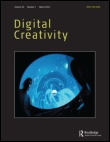
DIGITAL CREATIVITY
Fostering Dialogue on the Evolution of Digital ExpressionDIGITAL CREATIVITY, published by Routledge Journals, Taylor & Francis Ltd, is a distinguished academic journal that serves as a vital platform for interdisciplinary research across the realms of Arts and Humanities, Computational Theory and Mathematics, Computer Graphics, and Human-Computer Interaction. Since its inception in 2005, this journal has aimed to explore the intersection of digital technologies and creative practices, making significant contributions to our understanding of digital aesthetics, interactive design, and the evolving nature of creativity in the digital age. With an impressive Q1 ranking in Arts and Humanities and notable standings in related computational fields, DIGITAL CREATIVITY appeals to a diverse audience of researchers, professionals, and students eager to engage with pioneering studies and innovative methodologies. While it presents valuable content primarily through subscription access, its credence in driving forward-thinking discussions is underscored by its ongoing relevance and commitment to advancing knowledge in a rapidly changing digital landscape. Join the conversation and contribute to shaping the future of digital creativity.

International Journal of Cartography
Illuminating the World Through Cartographic InnovationThe International Journal of Cartography, published by Taylor & Francis Ltd, is a pivotal platform for scholars and practitioners in the fields of geography, planning, and earth sciences. With an ISSN of 2372-9333 and an E-ISSN of 2372-9341, this journal serves as a vital resource for exploring innovative cartographic methodologies and advances in spatial data visualization. Recognized in the 2023 category quartiles as Q4 in Computers in Earth Sciences and Q3 in both Earth and Planetary Sciences and Geography, Planning and Development, the journal operates at the intersection of traditional mapping techniques and modern technological developments. The journal’s research aims to foster interdisciplinary dialogue and inspire new applications of cartography within both academic and professional contexts. Although it does not currently operate on an open access model, it remains accessible to a broad audience through institutional subscriptions. With converged publication years from 2015 to 2024, the International Journal of Cartography is committed to enhancing our understanding of spatial relationships and promoting innovative cartographic practices on a global scale.
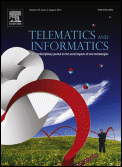
TELEMATICS AND INFORMATICS
Advancing Knowledge in Communication and InformaticsTELEMATICS AND INFORMATICS, published by Elsevier, is a leading journal that has significantly influenced the fields of communication, computer networks, electrical engineering, and law since its inception in 1984. With an impressive impact factor and a reputation that places it in the Q1 category across multiple disciplines, this journal serves as a crucial platform for researchers and practitioners who seek to explore the intersection of technology, information systems, and legal frameworks. The journal's commitment to disseminating cutting-edge research ensures that it remains at the forefront of academic discourse, appealing to a diverse audience including scholars, industry professionals, and students. Although currently not open access, TELEMATICS AND INFORMATICS offers comprehensive insights and innovative perspectives that contribute to the advancement of knowledge in its respective fields. For those engaged in the dynamic evolution of telecommunications and informatics, this journal is an indispensable resource, driving both theory and application.

Interaction Design and Architectures
Transforming Research into Impactful Design SolutionsInteraction Design and Architectures is a prominent open-access journal specializing in the intricate fields of interaction design, architecture, and beyond, published by INTERACTION DESIGN & ARCHITECTURES based in Italy. Since its inception in 2005, this journal has provided a vital platform for researchers, professionals, and students to disseminate their findings and insights in a rapidly evolving landscape. With an impressive H-index, it maintains rigorous academic standards and is recognized across several categories, achieving Q2 rankings in Architecture, Media Technology, and Social Sciences as of 2023, demonstrating its multidisciplinary appeal and significance in integrating diverse fields. The journal's committed editorial board and peer-review process ensure that high-quality research reaches its audience, promoting innovative discourse in interaction design and architecture. Access to this journal is facilitated through an open-access model, making the latest advances accessible to all interested parties. As the field continues to grow and adapt, Interaction Design and Architectures remains a cornerstone for impactful research and intellectual exchange.

International Journal of Mobile Human Computer Interaction
Advancing mobile interactions for a smarter tomorrow.International Journal of Mobile Human Computer Interaction (IJMHCI) is a leading scholarly publication dedicated to advancing the field of human-computer interaction in mobile environments. Established by IGI Global, this journal has served as a vital platform for researchers and professionals since its inception in 2009. With a focus on innovative designs, user experience, and the evolving landscape of mobile technology, IJMHCI plays a critical role in bridging theoretical research and practical applications. Though currently categorized in Q4 within the Human-Computer Interaction category for 2023, its consistent publication across the years reflects a commitment to fostering insightful discussions among academia and industry practitioners alike. The journal is indexed in Scopus, ranking #78 out of 145 in its field, highlighting its growing influence. While it does not currently offer open access options, its valuable contributions to mobile HCI research make it an essential resource for students and established researchers striving to explore the complexities of human interaction with mobile technologies.

BEHAVIOUR & INFORMATION TECHNOLOGY
Advancing Understanding of Digital Interactions.BEHAVIOUR & INFORMATION TECHNOLOGY, published by Taylor & Francis Ltd, is a leading journal in the interdisciplinary field that bridges the gap between technology and human behavior. Established in 1982 and continuing through 2024, this journal has garnered a high reputation with impressive rankings in 2023 across various categories: Q1 in Arts and Humanities (miscellaneous), Q2 in Developmental and Educational Psychology, Q2 in Human-Computer Interaction, and Q1 in Social Sciences (miscellaneous). The journal's robust Scopus rankings point to its influence among peers, being placed in the top percentiles across multiple relevant disciplines. Although it does not offer open access, it remains a pivotal resource for researchers and practitioners interested in the dynamics of technology's impact on behavior. By publishing rigorously peer-reviewed research, BEHAVIOUR & INFORMATION TECHNOLOGY aims to foster insights that enhance our understanding of how information technology shapes human interactions and societal outcomes, making it a crucial publication for anyone engaged in this rapidly evolving field.
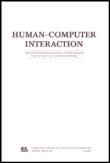
HUMAN-COMPUTER INTERACTION
Transforming User Experience Through ResearchHUMAN-COMPUTER INTERACTION is a premier academic journal published by Taylor & Francis Inc, dedicated to the interdisciplinary field of HCI, which explores the dynamic interactions between humans and computers. With its ISSN 0737-0024 and E-ISSN 1532-7051, the journal maintains a strong presence within the academic community and is recognized for its significant impact, holding a commendable impact factor that underscores its relevance. Ranked in the Q1 category for both Applied Psychology and Human-Computer Interaction, it occupies a critical position in Scopus rankings, listed as #15 in Applied Psychology and #11 in Computer Science, Human-Computer Interaction, placing it in the top 6% of relevant fields. Covering a broad spectrum of topics from usability studies to user experience design, the journal aims to facilitate innovative research and provide insights that bridge theoretical frameworks and practical applications. Published since 1985 and continuously evolving, HUMAN-COMPUTER INTERACTION remains an essential resource for researchers, professionals, and students eager to contribute to and benefit from advances in understanding how technology can effectively serve human needs.
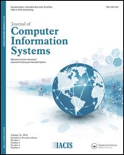
JOURNAL OF COMPUTER INFORMATION SYSTEMS
Connecting Research and Innovation in TechnologyThe JOURNAL OF COMPUTER INFORMATION SYSTEMS, published by Taylor & Francis Inc, is a prestigious academic journal dedicated to the fields of computer science and information systems. With an ISSN of 0887-4417 and an E-ISSN of 2380-2057, this journal has been a valuable resource since its inception in 1995, contributing to the convergence of research until 2024. The journal holds significant status in its respective categories, achieving a Q2 ranking in Computer Networks and Communications, and a Q1 ranking in Education, demonstrating its impact and relevance to a broad academic audience. With Scopus rankings placing it in the 90th percentile for Social Sciences - Education and respectable standings in Computer Science, it serves as a critical forum for the dissemination of innovative research, methodologies, and case studies within the domains of computer information systems. Although not an open-access journal, it remains a highly cited source, attracting researchers, educators, and professionals seeking to enhance their knowledge and contribute to the evolving discourse in technology and education.

IADIS-International Journal on Computer Science and Information Systems
Exploring the Frontiers of Computer Science and Information SystemsIADIS-International Journal on Computer Science and Information Systems is a prominent platform dedicated to advancing research and knowledge in the field of computer science and information systems. Published by IADIS, this journal aims to disseminate innovative findings and theoretical advancements that address contemporary challenges and trends in technology. The journal fosters a rigorous peer-review process, ensuring that only high-quality research is shared with its audience, which includes researchers, professionals, and students from around the globe. Although the journal is not currently open access, it serves as a vital resource for those looking to deepen their understanding of the evolving landscape of computer science. The ISSN of this journal is 1646-3692, and it boasts a strong commitment to promoting interdisciplinary communication and collaboration in the realm of information technology, making it an essential read for anyone looking to stay at the forefront of this fast-paced field.
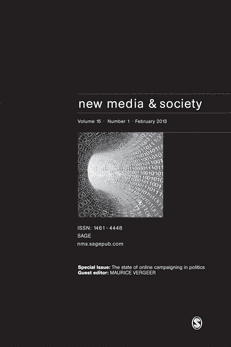
NEW MEDIA & SOCIETY
Fostering Interdisciplinary Dialogue on Digital InnovationsNEW MEDIA & SOCIETY is a leading academic journal published by SAGE PUBLICATIONS LTD, specializing in the dynamic interplay between new media and its impact on society. Established in 1999, the journal has become a vital resource for researchers and professionals within the fields of communication, sociology, and political science, consistently ranking in the first quartile (Q1) of its categories according to the 2023 Scopus Rankings. With an impressive percentile of 98th in both communication and sociology disciplines, NEW MEDIA & SOCIETY provides a platform for cutting-edge research that explores the complexities of digital interaction and its societal implications. Although the journal is not open access, it remains accessible through various academic institutions, making it an essential reference for students and scholars aiming to engage with the latest advancements in new media research. As the journal converges its focus into 2024, it aims to foster interdisciplinary dialogue and innovation, addressing critical issues related to digital technologies and their role in shaping contemporary society.